Pressure driving IndyCar whiz kid Sage Karam toward greatness

MILFORD, N.J.—A white Mercedes sedan pulls through a massive stainless steel gate and eases up a long driveway to a sprawling Mediterranean-style ranch. The rear passenger door opens, and into a cool, drizzly spring morning steps Sage Karam—an aquamarine-eyed, fair-haired 20-year-old race car driver with a swelling reputation for making grand entrances. His splashiest yet came last year at the Indianapolis 500 where he rallied from a third-to-last qualifying position to a ninth-place finish. Before that sudden arrival, he had never raced a big boy car.
The one-off performance earned Karam an extended run in the Verizon IndyCar Series this season with Chip Ganassi Racing, one of the league’s storied franchises. It’s a heckuva gig to land out of high school. Actually, Karam had just moved out of his parents’ house in nearby Nazareth, Pa. (to a downtown Indy condo) for the job. He comes highly recommended, by his old neighbor for a start. “I think the kid is a future champion,” says Mario Andretti.
Right now, though, the kid is a typical millennial in transition. His life is all over the place. Hence the trip to this North Jersey ranch—the residence of Karam’s chief benefactor, the bedding magnate Michael Fux (as in, rhymes with jukes). Karam’s old cars live in a barn on the property.
Well, Fux calls it a barn. On the outside, it’s more like a monstrous villa. On the inside, there’s a regulation-size basketball court with a squadron of supercars parked nose-out along three of its sides, an all-star lineup of Ferraris, Lambourghinis and, behind the far baseline, a Bugatti Veyron—the world’s fastest production car according to the Guinness book. The fleet is but a sampling of Fux’s personal collection, which explains why his front gate looks like it could hold back a Moorish invasion.
The driver gravitates to a trio of single-seaters at the near baseline corner. “My babies,” says Karam who at 5' 11" and 158 pounds might’ve turned into a respectable NAIA guard himself had he spent as much time palming a basketball as he did a steering wheel. The first car he piloted to a USF2000 series championship in 2010, as a 15-year-old rookie. The second he steered to five victories during the next two years in the Star Mazda series. With the third, a fire truck red Indy Lights machine, he won the 2013 points title on his first try. When Karam stares deep into your soul with his shimmering blue eyes and speaks all solemnly about how “definitely tough” it was to get to this point, you think: He has GOT to be kidding.
It hasn’t even been that long since Karam made his first pilgrimage to Indy as a towheaded 8-year-old. That 2003 Memorial Day memory might’ve blended together with all the rest if the boy hadn’t made a point of telling his father, Jody, as they were walking through the tunnel between Turns 1 and 2 that “I’m going to win here someday”—a moment that still turns his old man’s sinewy arms pimply with goosebumps.
This declaration came before Brazil’s Gil de Ferran carved his face into the Borg-Warner Trophy. Fast-forward 12 years, and Karam not only challenges de Ferran’s feats—from the back of the grid again this year, in the 23rd position. He also dates the man’s daughter, a model named Anna. What could this overgrown Hot Wheeler possibly know from struggle?
Karam couldn’t seem more at home back at the ranch amid Fux’s glittering droptops and coupes. Soon he’ll be showing off the barn next door which, incredibly, is stuffed with even more sparkly toys: a 1920 Model T truck, and a version of Karam’s Nazareth High graduation present—a 2008 Aston Martin Vantage.
But when Jody steps foot inside the barn, into a windowed front office, his own shimmering blue eyes appear as if they’re about to spring a leak. “You know,” he says with great seriousness, “I cried in this office…”
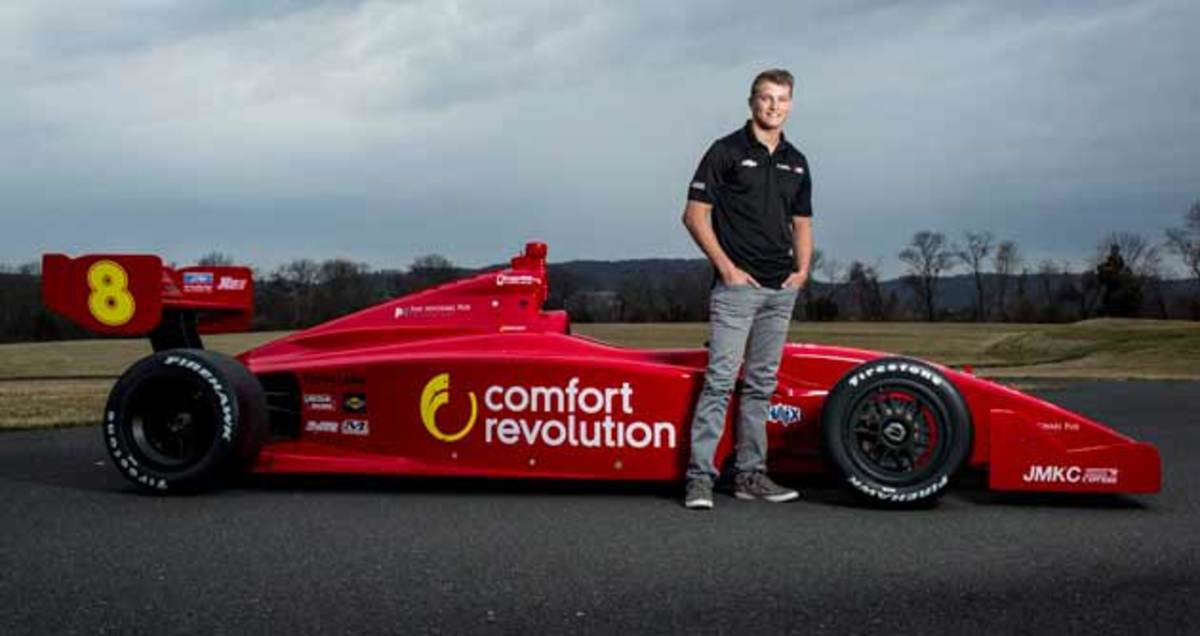
Goosebumps and glassy eyes are one thing. But Jody Karam didn’t seem like he had that gear. This is a man who still looks like he was chiseled from a six-foot block of Alabaster even as he pushes 50, whose prowess as an amateur wrestler and coach—for the last two decades at Liberty High, one of the tougher outs in the Lehigh Valley—is duly noted on his LinkedIn page. (Under honors, you’ll find his “100+ Division I victories” at Lock Haven, and an induction into the District XI wrestling hall of fame.) This is a man who still picks fights with his younger brother, Jeff, a coach for rival Freedom High. When Freedom pinned a two-match win streak on Liberty in 2001, Jody didn’t talk to Jeff for almost nine months.
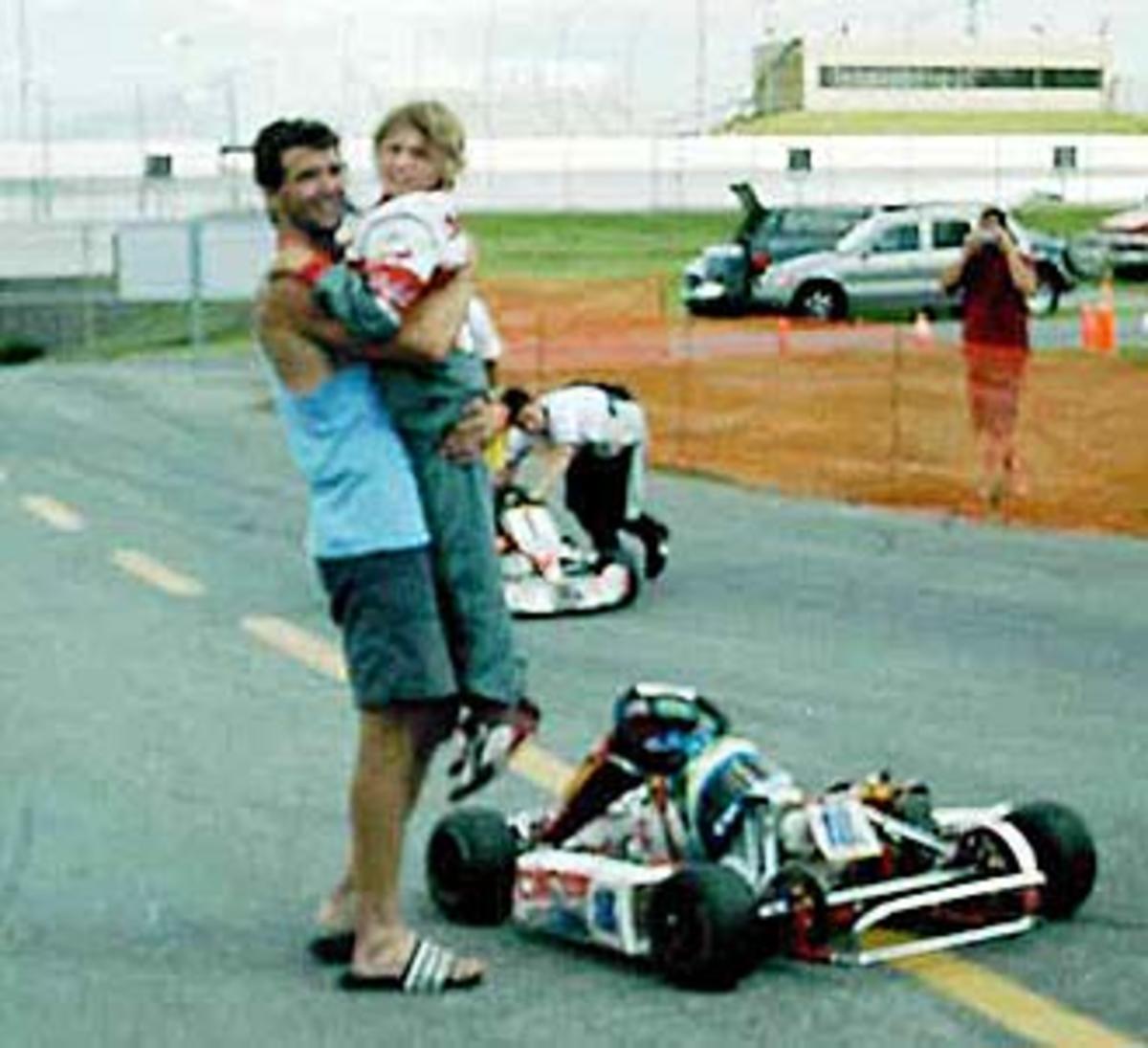
Jody couldn’t even take it easy on his six-year-old boy on the go-kart circuit, approaching their early sojourns to the neighborhood track as if a bottle of Indy’s milk were on the line. But after a few laps, it soon became clear that the father wasn’t going to get his way inside this circle. “The little kid used to blow his doors off,” says a tickled Andretti.
Sage might not have considered stretching his time in the cockpit into a career if American racing royalty didn’t live on the 30-acre swath two streets over. “It became almost an everyday ordeal where we were going up to the Andrettis’ for dinner,” Sage recalls. “I got a behind-the-scenes look of what it actually was that they were and what I could be potentially one day.”
Not surprisingly, it was Jody’s muscle that scored them those seats at the table. He and Michael Andretti, Mario’s eldest, met as go-kart dads—Michael’s boy, Marco, was eight years older than Sage and already immersed in the family business—and then they became workout buddies after Jody agreed to whip the champion open-wheeler’s career into shape.
On some weekends, when Michael was off racing, Jody would haul Marco and Sage to the track. On others, Jody and Sage joined the Andrettis on those business trips. “Michael and Mario always hooked us up with guest passes,” says Sage. “That’s what cinched my love for racing, when I was like, This is what I want to do for the rest of my life.”
Jody didn’t realize how dead serious Sage was about going pro until his unforgettable declaration at Indy (though that trip was made on dad’s dime). Meanwhile, the kid assumed everyone was already on his page. He even introduced the idea with a phrase that would stall any parent: “Are you thinking what I’m thinking..?”
The short answer was, Yes. Jody’s goosebumps pretty much gave that away. He had all the confidence in Sage, maybe too much. How could he not, given that the boy was excelling in local events while driving karts that were tuned by a hall of fame high school wrestling coach. “I gave him some go karts that were junk,” Jody says. “The setups were horrible. He’s probably a pretty decent driver today because, starting out, I had no idea what I was doing.” It wasn’t until he entered a seven-year-old Sage in events well beyond the Lehigh Valley and the boy flopped out of the gate that Jody’s confidence wavered. The longer Sage spun his wheels, the harder it became to justify for Jody and his wife, Karen, a neo-natal nurse.
A year of dispiriting performances—the gut-puncher coming at a race at Newcastle, Ind., in which an eight-year-old Sage finished in the bottom 15—would take a toll on the Karam family nest egg. To keep Sage going, Jody withdrew from savings accounts, liquidated retirement investments and maxed out a charge card. What’s more, that was with Ray Orwig, an affable Nazareth real estate investor and race fan who’d taken a shine to Sage, buying the kid’s racing helmets and picking up some invoices for engine rebuilds—and thank God he offered to help. Jody would sooner go bust than ask for a handout, least of all from his well-connected neighbors. “I never approached any of the Andrettis for financial assistance for Sage,” Jody says. “I couldn’t ask for that.”
Over a pizza dinner at a truck stop just outside the racetrack, as Sage, Karen, and the youngest Karam, a daughter named Sydnee, sat inside the tailgate of their Toyota pickup, Jody steadied himself before making his own bombshell announcement. “We’re done racing,” he told them. “It’s over. I have to put a stop to this. We have no more money left.” Sage’s Indy declaration, which had come only months earlier, seemed destined to go down as a non sequitur.
But then the kid exploded into a bawling mess, and Sydnee lost it too. The only sound for the first 100 miles of the trip back home to Nazareth was heartbreak in stereo. “Dad,” Sage cried, “this is my dream! You can’t end this!”
“You don’t have a choice,” Jody said.
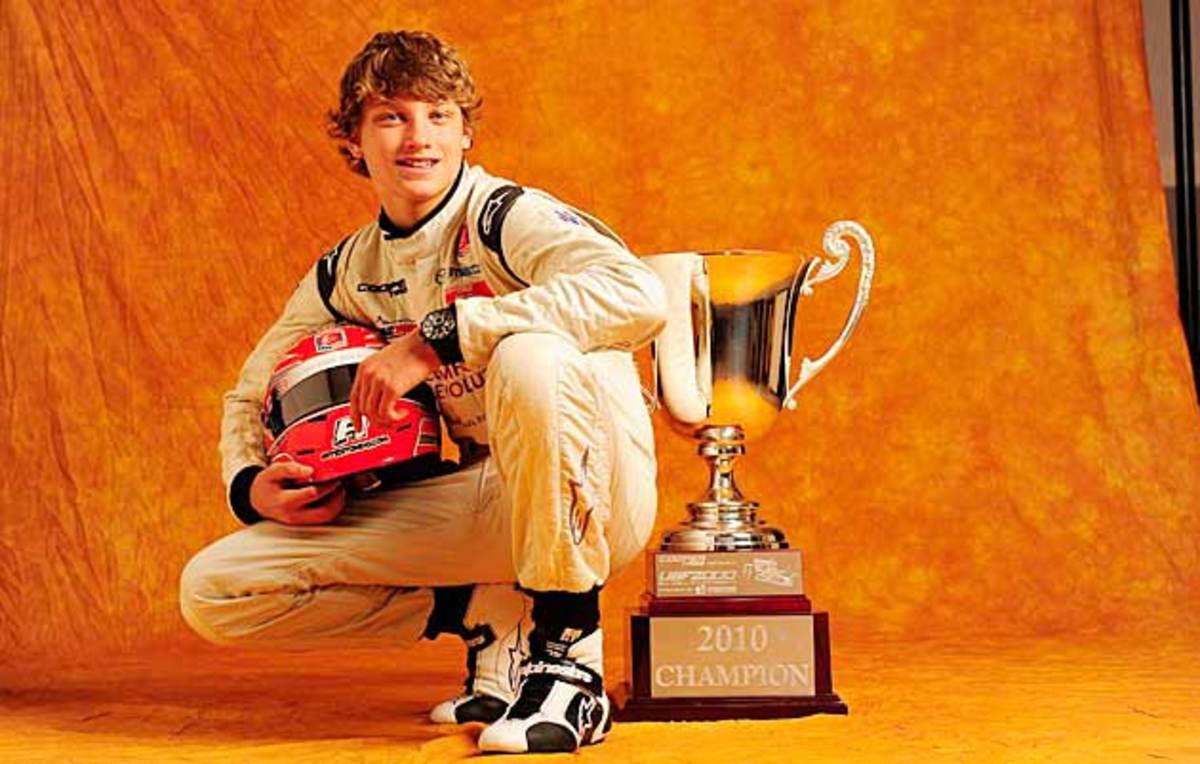
Well, the boy didn’t have a choice yet. There was still one last chance, a national go-kart double feature in Charlotte. To this point, Sage had never won an event so big. “If you win this race,” Jody told him, “we’ll let you keep racing. If you don’t, we’re done.”
The words couldn’t have sounded more strange coming from a man who would spend years telling the parents of his own wrestlers “not to put ultimatums on your kids’ future,” Jody says. “I was such a lunkhead for telling Sage what I did.” But what else could he say in the moment? Nazareth was still some 500 miles away, and an ultimatum—however unreasonable—would at least stop the bleating.
When word of this hard bargain made its way back to Jody’s mother, Rell, who was in the final throes of a cancer battle, she argued for terms that were more open-ended. “Please,” she told Jody. “For me. Take him racing.” That plea, which came two months before she died, stuck with Jody as he charged $1,500 to a second credit card for an engine rebuild ahead of the Charlotte double-header. There wasn’t much left in the kitty for a weekend hotel stay, so father and son bunked at Lowe’s Motor Speedway inside the Toyota.
The next morning, Sage rolled out of the truck bed and won the Saturday race. The morning after that, he did it again. Somewhere in the Karam house, there’s a picture of an over-the-moon Jody, in shorts, flip-flops, and a sleeveless shirt on the grid bear-hugging his boy. “We had nothing,” Jody says. “But that was one of the happiest days of my life. It was very fulfilling to put everything you have into something, and then put that on the line. People may say, ‘Oh, you lived through your kid.’ And, yeah, I probably did. But I enjoyed it.”
More importantly, Sage enjoyed it too—which is probably what saved Jody from going down as another hopeless stage parent. In that bottom-of-the-ninth weekend at Lowes, Sage got his first real taste of success under pressure, and it was sweeter than anything he’d ever known. He craved more.
This gave Jody license to stack up new challenges. Want to learn the art of car racing from Bruce McGinnis, the man who taught Michael Andretti? Win the Indy Racing League Stars of Karting and the World Karting Association’s Triple Crown or you’re through. (For becoming the first driver ever to do that, as a 13-year-old, Sage received a $7,000 scholarship to the prestigious Skip Barber Racing School.) Want to take advanced classes? I’ll front you another 7Gs to race your way in via another double feature—but, Buddy, you can’t blow this dough. (Sage won the first race and the second, which he began from the last row.) Wanna race a whole season? You gotta win the Skip Barber Shoot-out and bring home that $50,000 scholarship. (More on that later.)
The constant ante-raising only seems crazier once the easier routes to sports stardom that Sage had come into view.
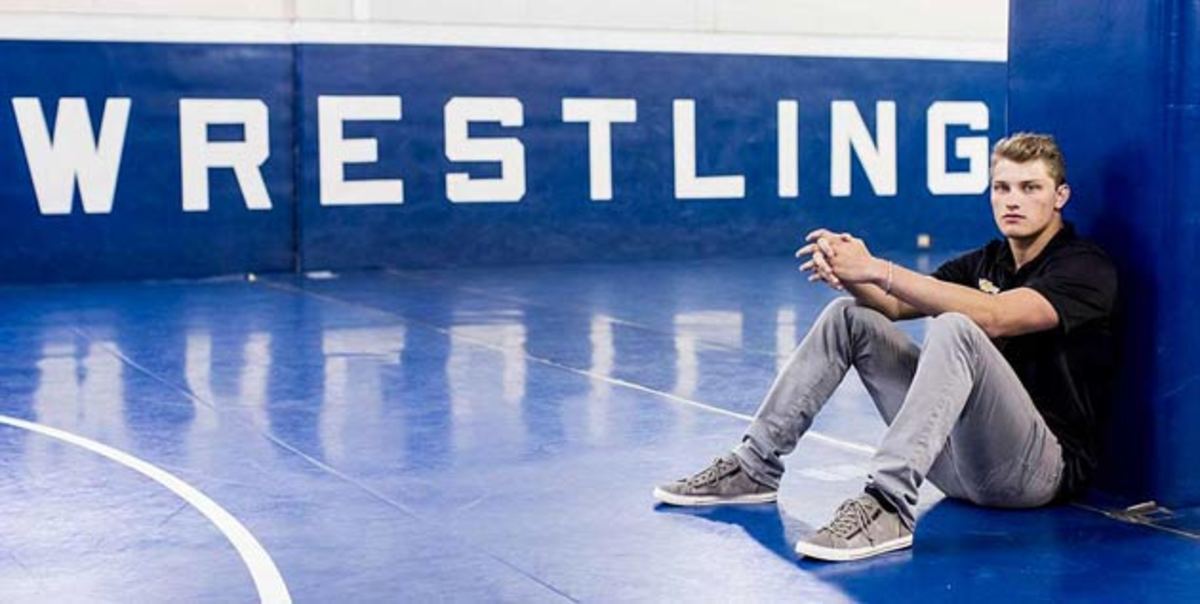
The question of whether racing drivers are athletes has been debated for decades—most recently, and clumsily, by Donovan McNabb, the former Pro Bowl quarterback. Stars like Tony Kanaan (who completed the 2011 Kona Ironman triathlon two years before winning the Indy 500) and NASCAR’s Kurt Busch (who engaged in a withering fitness regimen last year as preparation for running the Memorial Day double of the Indy 500 and Coca-Cola 600) make for compelling pro cases. But no racer settles this debate quicker than Karam. This Vine of him volleying Ping-Pong balls while balancing on an Indo Board barely scratches the surface of his profound athletic aptitude.
In middle school, Karam played baseball—and stood out no matter where he was plopped around the diamond: pitcher, shortstop, leftfield. Karam also stood out on the gridiron (at running back, initially)—so much so that Nazareth High’s varsity coach pulled him out of the student cheering section during his junior year and lined him up at safety and wide receiver. “I hadn’t touched a football since the fifth grade,” says Karam, a starter within weeks. He had hoped to suit up again the following year, but the gridiron glory eventually yielded to his on-track ambitions. “I think my best sport besides racing was football. I think I probably could gotten some cool offers there.”
Back in February, in an organized ploy to promote the upcoming IndyCar season, Karam dropped by the NFL scouting combine with fellow driver Josef Newgarden to run through a few drills. Karam did not expect that one of them would be the 40-yard dash. After a bit of coaching from one of the drill’s foremost takedown artists—“I just told him told him to stay low, to generate enough power in the first 10 yards to carry him through the next 30 yards, to think of himself as a jet, how it gradually catches speed and lifts off just as its about to run out of runway,” says Arizona Cardinals cornerback Patrick Peterson, who clocked a 4.3-second heat back in 2011—Karam completed his only attempt in 4.6 seconds.
The driver reckons he might’ve posted an even better time, in the sub-4.5 range, if he hadn’t opened his morning with a five-mile training run. “He definitely has a point,” says Peterson. “You don’t want try to run a 40 after you just ran five miles. That makes your legs more drained, more tired. You’re generating so much energy for a short amount of time, you want to make sure you’re as fresh as possible.”
Still, if Karam were going to shine anywhere outside the racetrack, it was probably on the wrestling mat—just like his uncle and his father before him. In fact, he took up wrestling around the same age at which he turned his first laps, and he juggled both sports through high school—even as he piled up scores of racing-related absent days. If it hadn’t been for his tutors and his dedication to internet-aided distance learning, Karam might never have made the occasional appearance on the honor roll, much less retained his eligibility. “Wrestling taught me a lot of cool life lessons that I apply to racing,” he says, “like being mentally tough and pushing forward even when things are down.”
He has fond memories of the years he spent locked inside Nazareth High’s windowless wrestling gym scrapping with teammates and trying to make his 155-pound weight—an aspect of the sport that his boundless appetite made difficult. Not even the seasonal battles against his father’s Liberty High avatars rattled him, even though those family reunions could be as awkward as the ones between his dad and his uncle. “I remember going out there and shaking the other guy’s hand and just looking past him, right at my dad on the bench,” Karam says. “It was strange seeing my dad on the opposite side. But I think it was almost as strange for the guy I’m wrestling against, too. My dad would go up to them and say, ‘Well, it’s my son you’re going against. I can’t root against him. But you’re my wrestler, too. So I’m just gonna sit here and watch and not do anything.’”
Things didn’t truly lighten up until Karam’s senior year. “I took one of my dad’s kids down and kinda smirked at him,” Karam continues. “And he starts laughing. We had a good time with it.”
Interestingly, Karam could’ve kept those good times rolling into college. Dave Crowell, Nazareth’s wrestling coach, says Division I recruiters regularly asked after Karam, a state-ranked wrestler by his junior year. One from Northwestern was even ready to offer him a scholarship until the coach waved him off. “If you're a ranked wrestler in Pennsylvania, the chances of you being successful at the college level are pretty good,” Crowell says. “But I had to be up front with recruiters and say, ‘It looks like, at his age, he’s one of the best racers in the world and that may preclude him from wrestling at the college level.’”
Just one thing would prevent Karam from realizing his on-track potential: money.
In July of 2008, a 13-year-old Sage found himself idling in a buffet line inside an Andretti Autosport hospitality tent during an IndyCar event at Watkins Glen International. He had plate full of food and nowhere to park and eat until a seat opened up next to an older gentlemen with a full gray beard and matching ponytail who was wearing jeans and a flannel t-shirt. A fellow gatecrasher, the boy figured. Upon sitting, he was drawn into some polite grown-up conversation.
“What do you do?” the man asked.
“I’m a go-kart driver,” Sage said. “I want to become a race car driver someday. That’s my goal. That’s my dream.”
The two must have talked for 10 minutes before Sage had his fill—mostly of food, as nothing quite challenged this big eater quite like a free Andretti spread. It was only much later, after Jody made his own acquaintance with the stranger—and casually noted that he was about to enter his son in the Skip Barber Shoot-out, where a chance at a gratis season of racing cars loomed—that Sage discovered that the grizzled man he’d had lunch with was Santa Claus.
A Cuban immigrant who grew up poor in Newark, N.J., Michael Fux (again, rhymes with jukes) owes his multimillion-dollar fortune to a knack for hawking foam mattresses. Yet, it’s a soft spot for cars that has come to define the septuagenarian. He was smitten from his first “drive” at age five—a Dodge taxi that he steered from his grandfather’s lap. That abiding love is why Fux herded all those supercars into the Milford ranch, and why he couldn’t resist a chance to get into the motorsports game years ago, as a patron for Andretti Autosport. Now here was Sage, another tempting charity case. “I just had the right gut feeling about him,” Fux says. “I liked his demeanor. I decided, I’m going to help this kid out.”
A couple of weeks pass, and Jody is back in Nazareth when he gets a call from a number he doesn’t recognize, bearing a New Jersey area code. He hits ignore, figuring it was from one in a growing list of bill collectors who were looking for him. Two minutes later, he gets another call—this time from Michael Andretti.
“Michael Fux just called me and asked for your number,” Andretti told him. “He’s been watching Sage, and he wants to help you guys out.”
“Is his number..?” Jody starts, before reciting the Jersey digits.
“Yeah.”
“I didn’t take it.”
“You IDIOT!”
“Yeah, I am an idiot...”
Luckily for Jody, Fux called back a couple days later. Not long thereafter, father and son were making the 25-minute drive to Fux’s Milford auto farm. “It was the first time I saw all of these cars,” recalls Sage, while sitting among them. “I was speechless. We pull up and we’re like, Who is this guy? Where are we right now? This is insane…”
When the three finally sat down inside Fux’s windowed office at the ranch, Sage overviewed his six-year plan to get to IndyCar—complete with a rough budget for each step of the ladder. Fux was impressed, but preferred to wait until after the Barber Shoot-out before deciding on his level of commitment. This faint promise of financial aid is what broke Jody at last. Despite his ultimatums, he nonetheless kept liquidating his retirement savings to cover bills for engine rebuilds and new tires (about $500 per weekend) and refinanced his house to pay for travel. (“He was so young,” says Jody. “Karen and I had to go to races with him.) Suddenly overcome with feelings of happiness and relief, Jody had himself a good, long cry in Fux’s office. His son and Santa Claus could only look on.
Cut to five days after Christmas, and the Shoot-out. Jody pulls up to Sebring (Fla.) International Raceway with his 13-year-old, the youngest driver in a field of 41 applicants representing eight countries and Puerto Rico. What’s more, the single-seater they’d be competing in, an F2000 racer, was one that Sage had only just started learning to drive. Here he was again with his back firmly against the wall. What does he do? He rolls out of another pickup—a Ford, which replaced the old Toyota—and wins the race.
An overjoyed Jody called Fux from the grid, ready to claim Sage’s $50,000 scholarship—money that, theoretically, could float Sage for a full season of F2000 racing and free Jody up to start repaying his debts. “Don’t take the money,” Fux told him. “If you do, Skip Barber will basically own you for the next seven years. Come back to Jersey, stat.”
So Jody turned down the check, a check he badly could’ve used, and did as directed. “I just had tremendous faith in this man,” he says of Fux. “I don't know what it was. He’s very convincing and sincere in the way he speaks. You never want to let him down.”
When father and son returned to the ranch, they found Fux back in the office—this time ready to commit. He wrote them a check for $110,000.
Fux’s support, tangible now, would bring out even more tears from Jody. He figured money would no longer be an issue. Boy, was he wrong.
Initially, it seemed as if it wouldn’t take long for Sage to pay back Fux’s investment and return a profit. Just as Sage was winding down a breakout 2009 season racing Barber cars that would see him claim the series’ rising star award, Jody got a call from his old workout buddy, Michael Andretti, offering Jody’s 14-year-old a chance to move up to open-wheel ladder. His climb would begin with another year of F2000 racing, but in IndyCar’s single-A series and with Andretti Autosport equipment—as long as Fux continued to back him, of course. (So he bought the race car and slapped a big sticker for his company, Comfort Revolution, on its side.) Sage went on to win nine out of 12 races on the way to earning a $365,000 scholarship to move up to double-A racing in the Star Mazda series.
Jody, figuring his son had at long last merged onto the expressway to the big time, decided to treat himself to a white Mercedes sedan, an E-class. The same Benz that Sage used for his grand arrival at Fux’s car farm on this dreary spring day. (Yes, that was dad in the role of chauffeur again.) “Little did I know,” says Jody, after copping to temporary insanity, “that as you go up the food chain, the expenses get worse. You’re traveling more, you’re spending more money.”
You’re campaigning for dollars that are contingent on landing more dollars. Even with a $350,000 scholarship, Sage was still $250,000 short of running a three-quarter-length schedule at the Star Mazda level in 2011. So Fux and Andretti split the difference. “I was paying most of it,” says Fux, “but he was getting all the credit.”
The kid was better than all right, collecting a pair of wins along with top rookie honors in year one, and another three victories in year two. But he didn’t finish in the big money, which made it difficult to entertain Sage’s desire to move up to Triple-A racing—Indy Lights. “This step was significantly more than Star Mazda,” says Sage, “about double.”
As Fux tells it, this was a step too far for Andretti. “I’d like Sage to do Indy Lights,” he recalls telling Michael, “and I’d like you guys to cooperate with me. Put up some money, and I’ll put up some money. They gave me every excuse in the world. Now, mind you this is a guy when he lost his main sponsor for his son, for Marco, I went ahead and I helped out. But, no, he didn't want to do that.”
The back and forth, Fux says, went on for three more months until he threatened to take Sage to another team. (Andretti declined repeated requests for comment for this story.) After hearing the word no more times than he’s accustomed, Fux went to Schmidt Peterson Motorsports and hammered out an Indy Lights contract for Sage. Before submitting it to the teen for his autograph, Fux says he gave Andretti one last chance to reconsider, but the team seemed resigned to moving on with two other prodigies—Zach Veach, an Ohioan who was named to CNN’s list of “Intriguing People” as a 15-year-old; and Carlos Muñoz, a gifted Colombian three years Karam’s senior who finished second in his first ever Indy 500 start two years ago.
On March 8, 2013, three days after turning 18, Sage signed a one-year deal with Schmidt Peterson. Andretti has been cold to the Karams since. “Andretti will not even look at Sage,” Fux says. “He has developed this terrible distaste for him because he felt betrayed. He wasn't betrayed. If you’ve got a kid, the kid’s doing good, and you’ve got to spend a little money from your side, then do it. I was gonna give 'em money. I said, ‘You come up with the difference.’”
Adds Jody: “I don’t know why he's holding it against us. We were the closest friends. Now, he won’t talk to me.”
By the time Karam settled in at Schmidt Peterson, the testing period was drawing to a close and the first race, in St. Petersburg, Fla., was a week and a half away. Here yet again was more pressure on Karam and, true to form, he didn’t buckle. All he did was finish third and string together eight more podium finishes, three of them victories—the first of which made him the only driver to win races on each step of the ladder. Incidentally, Karam also grabbed the series championship ahead of Muñoz (third) and Veach (seventh).
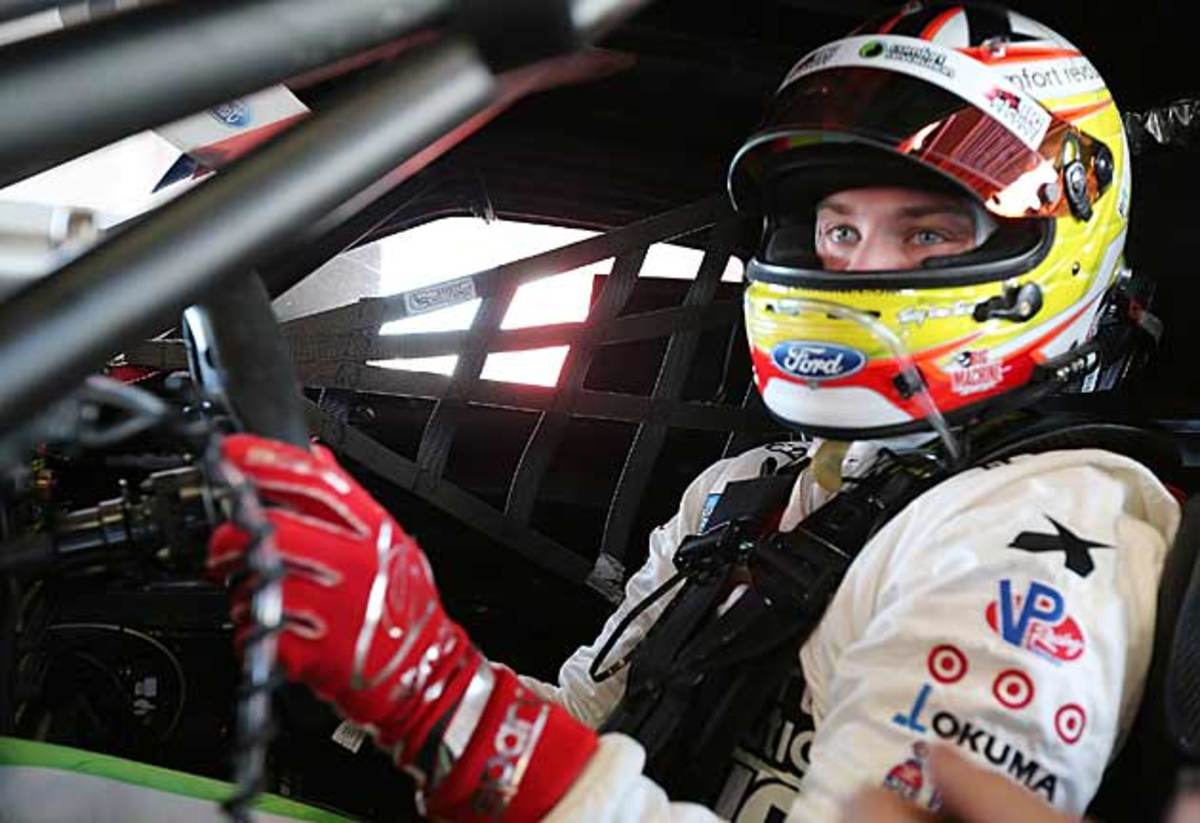
First place came with a $1 million scholarship—a nice chunk of change, but hardly enough for Karam to run a full Indy Lights schedule, let alone move up to the bigs. He was cautiously optimistic about a major career when his manager, whom he shares with Dario Franchitti, told him that the three-time Indy 500 champion was seriously contemplating retirement after barely surviving a wicked crash in a Houston street race in October of 2013. “This was before anybody knew,” Karam recalls. “So then I knew. And then my manager's first thing was, ‘If Dario's retiring, my next objective is to get another one of my drivers in the seat.’ And I was his other driver.”
The team holding its breath was Chip Ganassi Racing. Once it became clear that they were losing Franchitti for good, Karam was on deck. Though he’d ultimately lose the job to a vastly more seasoned Tony Kanaan, he continued to draw interest from Ganassi and eventually wound up racing sports cars for them.
After Karam more than held his own at the Daytona 24-hour race and the 12 Hours of Sebring, where he opened yawning leads against some of the world’s top drivers, Ganassi signed him to a long-term development deal. It was to begin with him running in the 2014 Indy 500 through an alliance with Dreyer & Reinbold Kingdom Racing, a curious landing spot indeed. Following the 2013 season, Dreyer & Reinbold announced it was pulling out of IndyCar altogether because its sponsorship money had run dry. With Karam, though, they could count on his $1 million scholarship.
Throughout the Month of May, the motorsports press made much ado of the fact that Karam—at the time, a senior at Nazareth High and barely a month past his 19th birthday—was skipping the prom to be at the Brickyard, as if that were truly irregular. “I had always missed prom, every year, for a race,” he says. “It was a cool story. I wanted to go to prom. You know, senior year of high school—I wanted to go. But doing the Indy 500 while I was still in high school was much cooler.”
While in Indy, he was thoroughly feted. Five days before the 500, his crewmembers decorated their garage in an island-theme, crowned him prom king, and made him pose for pictures with his girlfriend, Anna de Ferran, next to a stack of tires. A day later he was an honored guest at the Last Row Party, an annual bash the local press club throws for the race’s three lowest qualifiers—each of whom is awarded an oversized cardboard check, in cents, according to their starting position. When Karam got his big check, in the amount of 31 cents, “I was like, I may as well have qualified 33rd because that guy”—Buddy Lazier, for the record, who conquered the Brickyard in 1996 when Karam was still in diapers—“got 33 cents and I only got 31. I do better than them, and I get less money? I’m getting robbed here!”
It was hardly the last time that Karam would feel somewhat cheated. During the early stages of the race, Karam had zoomed to eighth place when the caution flag came out—after a record 149 furious green-flag laps—just as he was ducking into the pits, putting him a lap down and forcing him to wend his way through traffic all over again. He was back up to 14th when the race’s final caution—a red flag—flew with 10 laps to go. When the race was restarted, with six to go, he overtook five more cars en route to his ninth-place finish—higher than Tony Kanaan (26th), the guy who filled Franchitti’s seat; and higher than Scott Dixon (29th), the 2008 500 champ who will start from the pole position this Sunday, the two veterans who headline Ganassi Racing.
For the race, Karam would rack up a staggering 29 on-track passes, 25 of them for position. In most scenarios, this effort—the most robust of any racer—would’ve earned him certain distinction as the Indy 500’s most outstanding rookie. But Karam was beat to that honor by Kurt Busch—who, funnily enough, claimed that prize for Andretti Autosport while running the double. The fact that Busch was a 35-year-old NASCAR veteran with a 2004 Sprint Cup championship to his name, or that Busch managed just 13 on-track passes (five of them for position) never factored into the balloting, which is done strictly by position.
To his immense credit, Karam isn’t bitter about losing out on the top rookie prize, which cost him a $25,000 bonus check (on top of $270,305) and—perhaps more critically—the ability to distinguish himself to potential sponsors. “The fact of the matter is Kurt finished higher than me,” Karam says. “He beat me.” If anything’s disappointing, it’s that his breakout performance didn’t really move the needle in a series starved for homegrown stars. It’s the kind of slight an American teenager would never suffer after, say, storming to the quarterfinals of Wimbledon on the first go. In fact, sponsors would probably be tripping over themselves just to spoil that teen rotten.
Karam? The most he seems to be treated to these days is free pizza.
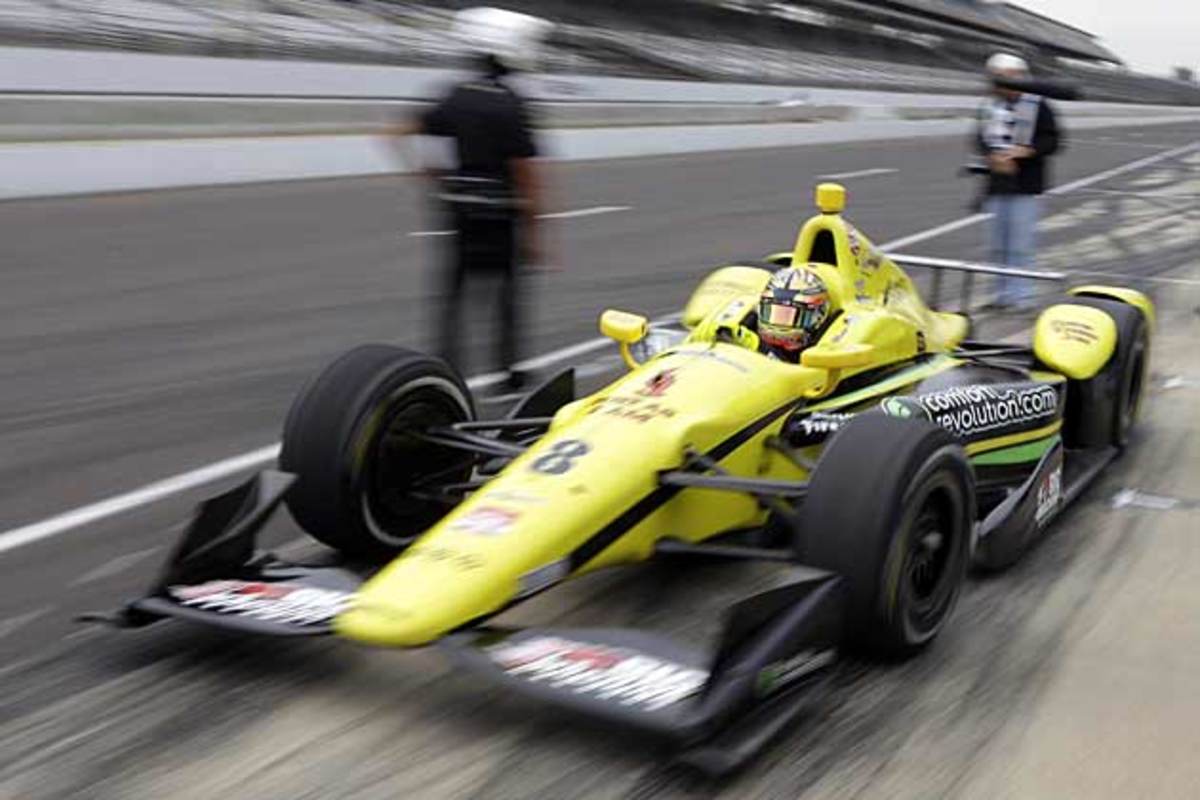
The promise of free pizza is why, at around half past noon, after a half-hour drive from Fux’s car farm, the white Mercedes sedan pulls into Sicily’s, an Italian restaurant just a few minutes down the road from the Karam’s house. Of course, Sage has a distinct presence here too. Two framed photos, of him turning laps in his go-kart and his Indy Lights racer, hang on a wall over the spice shakers alongside a picture of Michael Andretti in his racing livery.
Sicily’s is supposed to be closed today, but for Sage, they reserve a long table in a cozy corner of the second floor dining room so Jody, Karen, Orwig (the affable real estate investor), and a few others can join him for lunch. Sage wastes little time in showing off his legendary eating prowess, inhaling slice after slice of a cheese pie before peeling off early. Mercifully, the meal is on the house.
Next on his schedule is a New York media tour, followed by a trip to New Orleans for the inaugural running of the Grand Prix of Louisiana. A flash of panic crosses Karam’s face when he thinks he forgot to pack a bag, then passes when his mom assures him she took care of it, and threw in some Easter candy for good measure. As he leans over the table to kiss her goodbye, she stuffs a wad of dollar bills into his hand, more money they don’t really have. “We financed the house twice,” says Jody, “I cashed in four of my retirement investments. I had to borrow on ‘em. I’m probably $100,000 upside down still.”
They can scarcely afford to travel to watch Sage’s races live, but maybe that’s just as well. After breaking his right wrist during a March test session at Barber Motorsports Park, Sage essentially drove his first three races with one hand and posted an average finish of 18.3. “I definitely think it compromised the start of his season massively,” says Franchitti, who has remained in the Ganassi fold as technical advisor and tutor of sorts to Sage.
But heading into Indy, Franchitti has noticed a change in his pupil. He’s healthier, but he’s also a bit wiser too. “He’s so much more confident because he's been there before,” Franchitti continues. “He knew what he wanted from the car. The feedback was much more precise because he’d been there. He had a picture in his head of what he wanted the car to feel like.”
That much showed in the practices leading up to the race, as Karam surged up the speed charts. If anything, he seemed to hold back a little in last Sunday’s qualifying session—but, then again, everyone was easing off after a trio of aerial crashes prompted IndyCar officials to instruct teams to wind down their engine outputs to prevent more cars from taking off.
From the 23rd position on the grid, Karam will have his work cut out for him once again when the green flag flies this Sunday. Last year’s performance has ratcheted the expectations to levels heretofore unseen. What’s more, his future beyond the 2015, when his development deal with Ganassi ends, is hardly promised. So here, for the umpteenth time, is more pressure on Karam.
Watch out.
